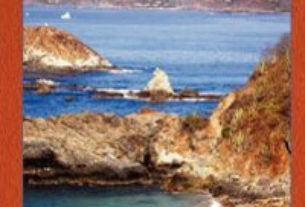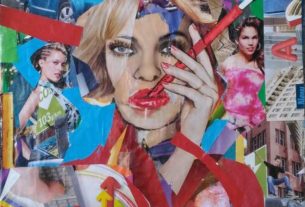Westwords
Back in the previous century, at about the time Albert Gore was inventing the internet, clean air, space stations and probably diet Coke, we got hooked on Lake Chapala.
This was an era when Gordon Weaver had his literary license in the name of Michael Scott Long and used the word “paradise” to describe the north shore.
Gordon worshipped lakeside weather as second best in the world. He fell in love with flowers that bloomed all winter. He was thrilled by the vitality of his village. He was very good with adjectives, so good his essays were contagious.
Because he came by way of Hollywood, we cut him some slack on slight exaggerations. This guy had written promotional paragraphs for the movie King Kong. Of course his imagination was stretched.
We so enjoyed Gordon’s choice and arrangement of words, we never accused him of wearing rose-colored glasses. He was so enthused about the positives that we assumed he just couldn’t see the plastic bags and bottles and animal bodies that littered the roadside.
Fast forward through our several seasons at lakeside to this startling conclusion: Gordon was mostly correct. With a few exceptions, the weather is wonderful. The region is not absolutely perfect. It is not pure paradise. But it is very livable, even though Canadians trying to turn left have multiplied congestion in the lovely community called Ah-hee-HEEK..
Through the years, Gordon Weaver gained credibility. Compared to political commentary by certain northern refugees in certain English-language publications, Michael Scott Long had a powerful grasp on accuracy and truth. Viva Michael! Viva Gordon!
Exaggeration still crops up occasionally. We’ve been fooled by advocates of great-tasting watermelon and by promises of ripe, delicious mangos that were hard as young pumpkins. The late, great John Bryant once vowed we would eventually grow accustomed to pre-dawn noises. Maybe — as our hearing fails.
First place among exaggerations goes to old friend Pedro Cortez Diaz. He told us about Mexico’s Niagara Falls.
We’ve seen the real Niagara. We stood in awe of this powerful force, 150,000 gallons of water per second roaring over the ledge and onto the pile of rocks below. We wiped the spray from our glasses and wondered what it would be like to ride over the edge in the proverbial wooden barrel. Yeah! Go for it.
Pedro suggested we check out the Mexican version. He told us Juanacatlan Falls is second in size to Niagara in this part of the world. He told us how to find it, Highway 23 between Chapala and Guadalajara, right turn toward El Salto, if you pass the airport, you’ve gone too far. In El Salto, ask the policeman at the last light if it is OK to turn right on red, then cross the bridge of 24 arches over the Rio Grande de Santiago and look back to your left.
Pedro, your directions seem very precise. He said gracias.
He suddenly knew a lot about Juanacatlan Falls and the Santiago river. It is the outbound stream from Lake Chapala, the one which cut the canyon and created the scenic beauty north of Guadalajara. It runs all the way to the Pacific Ocean. How about that!
Pedro, a bubbling fountain of facts, bubbled over. He recited vital statistics. The falls are more than 140 meters wide and maybe 30 meters high, with three levels that create a cascade down the cliff. Wow! That’s near enough to half the size of Niagara.
Pedro said there once was, on the El Salto side, a hydroelectric generator and some kind of mill and a restaurant with big windows that provided a spectacular view and a decent dinner for 10 or 12 pesos.
So, what happened to those landmarks? Pedro said the falls fell, that the river suffered a serious drop in quantity and quality of water and he supposed the buildings got old and the businesses were no longer profitable.
Pedro had seen a long-ago picture in a book. He said the falls were fierce and famous. Maybe a hundred years ago they were featured on a postage stamp, 50 centavos.
Tell me more, Pedro.
He couldn’t.
“I’ve never been there.”
Well, we have. Pedro’s directions were flawless, right down to the policeman at the El Salto intersection where you turn right to Juanactlan. We found the bridge of 24 arches, drove across and parked opposite the flower shop. Tulips were on sale.
Alas, there were no tourists and no salesmen pushing souvenirs of Juanacatlan Falls.
Troubled that we might be missing something, we walked back across the bridge and carefully studied the scene. Even with Lake Chapala at a relatively high water mark, the Rio Grande de Santiago wasn’t too exciting. There was more flow than you could measure with five-gallon buckets but just a drip and a drop compared with the real Niagara.
There was something Niagara doesn’t have, a lot of ugly gray foam and a bad smell as if a chemical company or sewage treatment plant was hiding upstream.
Mexicans coming and going across the bridge watched me watch the falls. I was wondering what Juanacatlan was like a hundred years ago. They were probably wondering just how dumb do gringos get.
If that old man with a fuzzy face but no hair on top got out of the sun, off the bridge and away from the smelly stuff, he could be buying tulips for half price.


